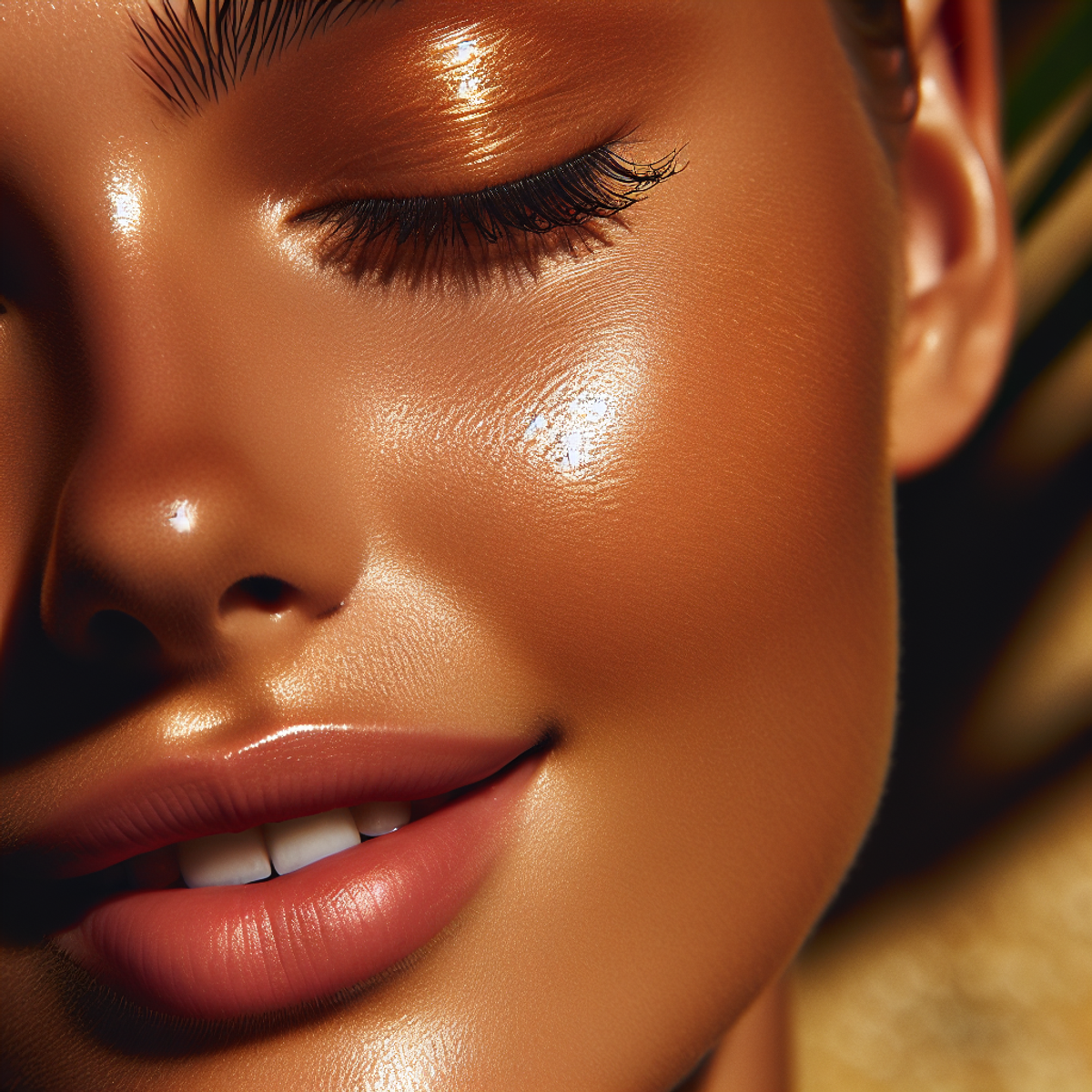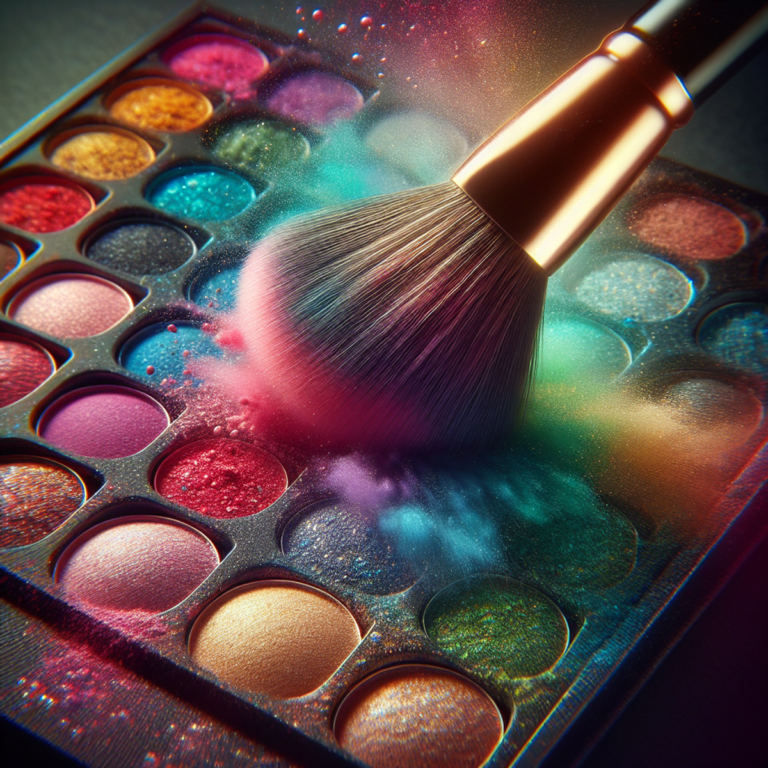How to Use Self Tanner on Your Face, According to an Expert

Introduction
Self-tanning has become increasingly popular as a safe alternative to sunbathing, offering a way to achieve a sun-kissed glow without the harmful effects of UV radiation. In this article, we will explore why it’s important to use self-tanner on your face safely and share expert tips on how to get a tan that looks like you’ve been kissed by the sun.
Understanding How Self-Tanner Works on the Face
Self-tanning products have become increasingly popular as a safe alternative to sunbathing. They provide a way to achieve a beautiful, sun-kissed glow without exposing the skin to harmful UV radiation. But how exactly does self-tanner work on the face? Let’s delve into the science behind it.
One of the key ingredients in most self-tanners is dihydroxyacetone (DHA). This colorless chemical reacts with the amino acids present in the top layer of the skin to produce a temporary browning effect. When DHA comes into contact with the proteins in our skin, a chemical process called the Maillard reaction occurs.
The Maillard reaction is a non-enzymatic reaction that happens when reducing sugars react with amino acids or proteins at high temperatures. In the case of self-tanning, DHA acts as the reducing sugar and interacts with amino acids in the top layer of our skin. This reaction leads to the formation of melanoidins, which give our skin its tanned appearance.
It’s important to note that self-tanner only affects the outermost layer of the skin, known as the stratum corneum. This layer consists of dead skin cells that naturally shed over time, which means that self-tanner will gradually fade away as these cells are sloughed off.
By understanding how self-tanner works on the face, you can achieve a more natural-looking tan and avoid common mistakes. Here are some key points to keep in mind:
- Patchiness: Since self-tanner only affects the top layer of your skin, it’s crucial to exfoliate properly before application. By removing dead skin cells and creating an even surface, you can prevent patchy or uneven results.
- Color development: The depth of color achieved with self-tanner depends on various factors such as DHA concentration, application technique, and duration of contact with the skin. It’s essential to follow the instructions provided by the self-tanner manufacturer to achieve your desired shade.
- Streaks and lines: Circular motions are generally recommended for applying self-tanner on the face. This technique helps to blend the product evenly and minimize streaks or lines. Pay extra attention to areas that naturally tan in the sun, such as the forehead, cheeks, and nose.
- Gentle application: Avoid vigorously rubbing or pulling at your skin when applying self-tanner. The delicate facial skin is more prone to irritation, so a gentle touch is key for a seamless and natural-looking result.
Understanding how self-tanner interacts with the skin can help you make informed choices during the application process.
The Benefits of Using Self-Tanner on Your Face Instead of Sun Exposure
1. Protecting Your Skin from Harmful UV Radiation
The harmful effects of UV radiation from the sun or tanning beds are well-known. Overexposure to these sources can lead to:
- Premature aging, including wrinkles, fine lines, and age spots
- Increased risk of developing skin cancer
It’s important to prioritize the health of your skin and seek safer alternatives for achieving a natural glow.
2. Avoiding Sunburn and Related Skin Damage
Opting for self-tanner on your face reduces the chance of sunburn and related skin damage. By completely avoiding sun exposure, you eliminate the immediate risks associated with UV rays:
- Redness
- Peeling
- Discomfort
3. Customizing Your Tan Shade for a Natural Look
Self-tanner allows you to customize your tan shade according to your preferences and skin tone. This level of customization ensures a more natural-looking tan that complements your facial features and overall complexion.
In summary, choosing self-tanner over sun exposure offers a safer approach to achieving a radiant complexion with reduced risks of sunburn and long-term skin damage.
Choosing the Right Self-Tanner for a Flawless Facial Tan
When it comes to achieving a perfect tan on your face using self-tanner, selecting the appropriate product is crucial. This not only ensures a natural-looking tan but also takes care of your skin. Here are some considerations when choosing a self-tanner for your face:
1. Specific Formulation
Opt for self-tanners that are specifically designed for facial use. These products are lighter and less likely to block pores, resulting in fewer breakouts and less irritation on your delicate facial skin.
2. Consider Your Skin Type
Your skin type plays a significant role in choosing a self-tanner for your face. Keep the following points in mind:
- If you have oily or acne-prone skin, select an oil-free and noncomedogenic formula to prevent pore blockage.
- For dry or sensitive skin, look for self-tanners that contain hydrating and soothing ingredients to minimize the risk of irritation.
3. Pick the Right Shade
Choosing the correct shade is essential for achieving a natural-looking tan on your face. Consider these tips:
- Select a shade that complements your skin tone and matches its natural undertones.
- Fair skin tones usually appear more natural with light to medium tan shades.
- Olive or darker skin tones typically benefit from medium to deep shades.
Remember, the goal is to enhance your features with a subtle, sun-kissed glow that doesn’t look artificial. By taking these factors into account, you can confidently choose a self-tanner that will provide your face with a flawless and radiant tan.
Preparing Your Face for a Smooth Self-Tanning Application
Before you apply self-tanner to your face, it’s important to get your skin ready. Taking the time to prep your face will help make sure that the self-tanner goes on smoothly and evenly, giving you a perfect tan. Here are some steps you should follow:
- Cleanse your face thoroughly: Start by washing your face with a gentle cleanser to get rid of any dirt, oil, or makeup. This is crucial because it creates a clean base for the self-tanner to stick to. Pay extra attention to areas like your forehead, nose, and chin that tend to be oily.
- Exfoliate gently: Before applying self-tanner, exfoliating your face will help remove dead skin cells and make your skin smoother. Use a mild facial scrub or an exfoliating brush to gently buff away any roughness or flakiness. Focus on areas that are usually drier, such as around your nose and eyebrows.
- Moisturize your skin: Before using self-tanner on your face, it’s essential to apply a lightweight moisturizer. Moisturizing helps prevent the tanner from sticking to dry patches and ensures that it goes on more evenly. Find a moisturizer that suits your skin type – oil-free for oily skin, deeply hydrating for dry skin, or gentle for sensitive skin.
Pro Tip: Let the moisturizer soak into your skin completely before moving on. This creates a barrier between your skin and the self-tanner, stopping it from going too deep and causing unevenness.
- Optional: Use a primer: If you want an extra smooth surface for your self-tanner, think about using a primer made specifically for the face. Primers fill in fine lines, pores, and imperfections, making it easier for the self-tanner to glide on. But remember, this step is up to you and might not be needed for everyone.
By following these steps, you’ll make sure that your face is all set for the self-tanner and will get a natural-looking tan. Take your time with the prep process to avoid rushing or skipping any of these important steps. Now that your face is prepped, it’s time to move on to actually applying the self-tanner.
How to Apply Self-Tanner on Your Face: A Step-by-Step Guide for a Seamless Tan
Applying self-tanner to your face requires precision and care to achieve a natural-looking tan without streaks or uneven patches. Follow these step-by-step guidelines for a seamless application:
Step 1: Start with a small amount of product
- Begin with a small amount of self-tanner on your fingertips or a cosmetic sponge. It’s better to start conservatively and gradually build up the color to avoid an overly dark result on your face.
Step 2: Use circular motions to blend the self-tanner
- Using gentle, circular motions, blend the self-tanner into your skin. Pay close attention to areas that naturally tan in the sun, such as the forehead, cheeks, and nose. Ensure an even coverage across all areas of your face for a consistent tan.
Step 3: Blot any excess product with a tissue
- After applying the self-tanner, use a tissue to blot any excess product. This helps prevent it from settling into fine lines or pores on your face, ensuring a smooth and flawless finish.
Step 4: Wash your hands thoroughly after applying self-tanner
- Thoroughly wash your hands after applying self-tanner to avoid staining your palms. Additionally, use a gentle touch to lightly apply the product to the back of your neck and ears for a seamless transition between your face and body.
By following these steps, you can achieve an even and natural-looking tan on your face without any telltale signs of artificial tanning products.
Enhancing Your Facial Tan: Contouring Techniques with Self-Tanner
Self-tanner is a versatile product that can be used not only to achieve an all-over glow but also to enhance the natural contours and structure of the face. By strategically applying self-tanner, you can create subtle shadows and highlights, effectively contouring the facial features for a sculpted and defined appearance.
Exploring Contouring with Self-Tanner
When it comes to enhancing your facial tan with self-tanner, think of it as an artistic process where you have the opportunity to play with light and shadow on your face. Here are some key points to consider:
- Creating Subtle Shadows: Self-tanner can be used to create gentle shadows that add depth and dimension to your facial features. For example, applying a slightly darker shade of self-tanner along the hollows of your cheeks can give the illusion of more defined cheekbones.
- Enhancing Highlights: Conversely, a lighter shade of self-tanner can be strategically applied to areas where the sun naturally hits your face, such as the tops of your cheekbones and bridge of your nose, to accentuate these features and create a luminous glow.
Specific Contouring Methods
To achieve a well-contoured look with self-tanner, it’s important to tailor your application techniques to different facial features:
- Sculpting Cheekbones: To sculpt your cheekbones, use a small amount of self-tanner in a shade slightly darker than your natural skin tone. Starting from the hairline near your ear, blend the product along the hollows of your cheeks towards the corners of your mouth. Remember to blend thoroughly for a seamless finish.
- Slimming the Nose: If you desire a slimmer-looking nose, use a thin brush or cotton swab to apply a small amount of self-tanner along the sides of your nose. Blend carefully for a subtle effect that creates the appearance of a more refined nose shape.
By understanding how to strategically apply self-tanner for contouring purposes, you can elevate your facial tan to not only add color but also enhance the natural beauty and structure of your face.
Prolonging the Longevity of Your Self-Tan on the Face
1. Use Setting Products to Seal and Extend the Wear
After applying self-tanner to your face, using a setting spray or translucent powder can help seal the product and prolong its longevity. These setting products create a barrier that prevents the self-tanner from transferring onto clothes or rubbing off easily.
2. Follow Gentle Skincare Practices
To maintain your facial tan, opt for gentle cleansers that do not strip away the color or natural oils from your skin. Avoid over-exfoliating your face, which can cause the tan to fade more quickly.
3. Try Gradual Tanning Moisturizers for Touch-Ups
Gradual tanning moisturizers are an excellent way to touch up your facial tan between self-tanner applications. These products help ensure a more gradual and natural-looking fade, extending the life of your tan while keeping your skin hydrated.
Incorporating these steps into your routine will help you achieve a long-lasting and even self-tan on your face.
Final Thoughts on Mastering the Art of Self-Tanning for a Natural-Looking Glow
- Embrace the beauty of self-tanner as a safer alternative to sunbathing, while still achieving that desired sun-kissed radiance on the face.
- Practice makes perfect! Don’t be discouraged if you don’t get it right on the first try. Experiment with different techniques and products to find what works best for your unique skin tone and facial structure.









